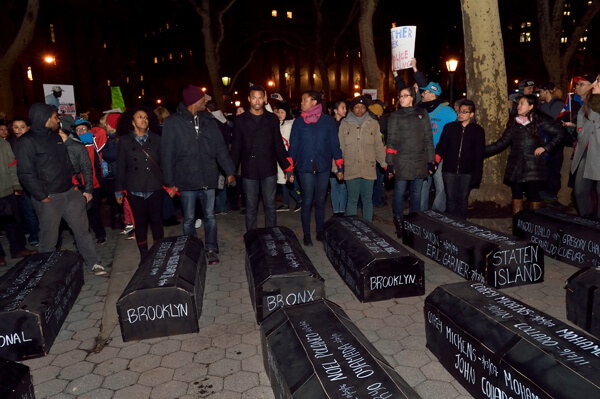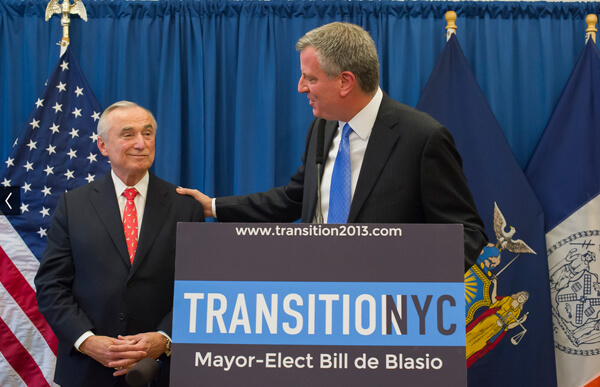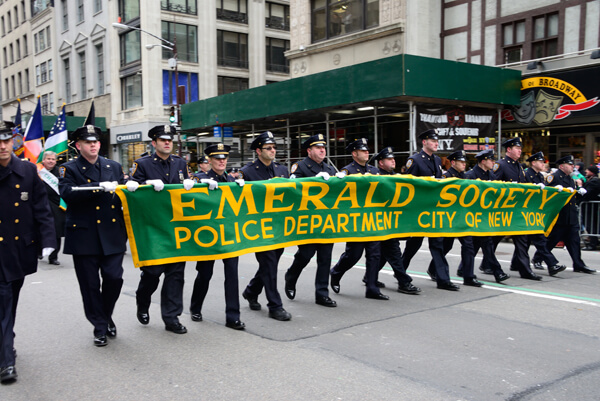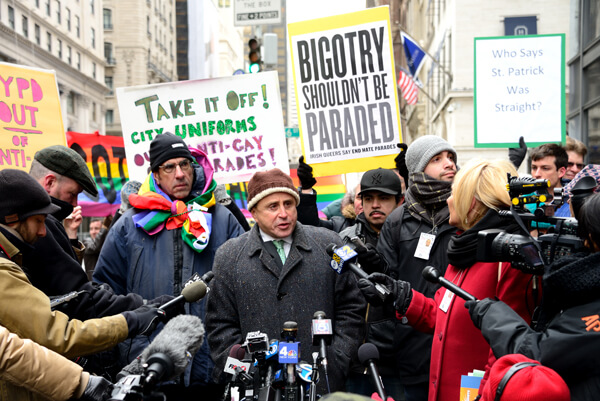Documents obtained from the FBI as well as state and federal court documents show that organized crime control of bars and clubs serving the LGBTQ community was pervasive in the 1960s and was found as late as 1980 in New York City.
“[T]he informant advised that Matty The Horse Ianniello operates numerous bars in the area of 48th Street and 6th and 7th Avenues, NYC,” an unidentified FBI agent wrote in a December 1, 1965 memo. “He stated this individual is a ‘made guy’ in the Vito Genovese ‘family.’ He further advised that in the operation of these bars, he has a partner who is a Jewish fellow and a real big guy physically.”
In response to a Freedom of Information request, the FBI released 1,600 pages of documents that detailed organized crime ownership of nightclubs and bars in Manhattan. Published reports from the ‘70s identify Ianniello as the leading mob owner of bars in the city, and Gay City News originally sought records only on Ianniello’s businesses.
On June 22, 1966, Harold Baer, an assistant US attorney in the Southern District of New York, launched a grand jury investigation into “hoodlum infiltration and control of hotels, motels, bars, restaurants, and caterers… in the Greater New York area.” The result is that the FBI records refer to other mobsters who also operated bars serving the LGBTQ community.
The FBI records support the assertion that Ianniello dominated the market. A November 11, 1967 memo states, “According to what informant learned Ianniello owns mortgages or shares in about 60-80 bars in the Broadway area and controls the ‘strip’ from 6th to 8th or 9th Avenues between West 43rd and West 49th Streets.”
Ianiello, who died in 2012, and Ben Cohen, the “Jewish fellow” who was his business partner, made bar owners take out loans from them. If the owners fell behind on payments, they seized the business and incorporated it under a new name with a front man operating it. They owned bar equipment and vending machine companies and made bars and nightclubs use their vendors. They skimmed profits from businesses they owned.
In 1985, Cohen, Ianniello, and 17 other defendants, including three of Ianniello’s brothers, were indicted for violations of the Racketeer Influenced and Corrupt Organizations (RICO) Act, mail and bankruptcy fraud, and corporate and personal income tax evasion. They were convicted. Ianniello was sentenced to six years in federal prison, and Cohen was sentenced to five years. Cohen and Ianniello each had to forfeit $666,667 representing their share of the more than $2 million that was skimmed from five businesses from 1979 to 1982.
One of those five businesses was G.G. Barnum’s Room on West 45th Street, according to documents filed by the New York State Department of Taxation and Finance in a proceeding in which Cohen and Ianniello challenged the state taxes due on the skim. In 1980, G.G. Barnum’s Room was a “gay disco” with a “cabaret show,” the state said. It was a drag show, and the club had a gay male and transgender following.
Ianniello was already wealthy. In a February 8, 1966 memo, an informant told the FBI that he was “one of the richest mid-Manhattan buttons” — or a “made man in a Mafia organization — and that he “will finance the opening on a new bar in Manhattan. Informant noted that on many occasions the owners were forced to use shylock loans furnished to them by” Ianniello and Cohen. That anti-Semitic slur is used interchangeably with loan shark throughout the FBI files.

FBI informants asserted that Ianniello owned the Stonewall Inn. Various informants also had him owning at least 12 other bars or after-hours clubs that served the LGBTQ community in the late ‘60s and early ‘70s.
Records from the Knapp Commission, which investigated police corruption in a number of industries beginning in 1970, support the informants and add details. The commission looked at the 19th Precinct and the Sixth Precinct, which includes the West Village, in its investigation into corruption in bars. The commission said that Ianniello and Aniello Dellacroce, a senior member of the Gambino crime family, were “frequently mentioned as having ‘some of the action’ in the after-hours bars” that served the LGBTQ community in the West Village. Members of the Gallo crime family were also operating LGBTQ clubs in the Sixth Precinct, the commission concluded.
In an October 25, 1969 memo that refers to the separate FBI files for Ianniello and Dellacroce, an informant told the FBI that he heard that the two men “were backing after hours joints” and listed the 123 Club on University Place among four clubs. The Mattachine Society of New York, an early LGBTQ rights group, listed the 123 Club in a 1968 bar guide.
Eddie De Curtis, a member of the Gambino crime family, operated at least two “queer joints” — Caesar’s Corner and the Rat Race — according to a December 27, 1968 FBI memo.
In 1965, the Nassau County District Attorney’s Office convicted Eddie De Curtis, John Vignini, and Daniel Fatico, a Gambino crime family member, for operating a “disorderly house” in Island Park, Long Island. Nassau County investigators observed “indecent and disorderly homosexual activities,” which meant “boys dancing with other boys and girls dancing with other girls” and touching each other through their clothing at The Magic Touch, De Curtis’ bar. Using wiretaps, investigators learned that De Curtis also operated Mask, a bar on 125th Street in Manhattan that served the LGBTQ community.
In 1971, a task force comprised of the NYPD, the federal Bureau of Alcohol, Tobacco and Firearms, and the IRS raided nine after-hours clubs in Manhattan. Six of the nine are either listed in LGBTQ bar guides from the time or are known to have served the LGBTQ community. Among the 28 people arrested were Paul Di Bella, a member of the Gambino crime family, his stepson Nicholas Di Martino, and Hubertus Schied, according to The New York Times. The Knapp Commission reported that Di Martino and Schied were front men for Ianniello, suggesting that there was some cooperation among the Mafia groups. This may explain why the Stonewall was known to have been operated by the Gambinos, but owned by Ianniello.
The criminal groups exploited every part of the LGBTQ community. The “Where the Girls Go” section of the Mattachine bar guide lists “The Bohemian” on Barrow Street and “Kookies” on West 14th Street as lesbian bars. In an anonymous 1967 letter to the FBI that accused Ianniello of bribing a local politician, the writer said that the mobster owned “The Bohemia” among seven clubs. Five of the seven are known to have served an LGBTQ clientele.
Kookies, or “Kooky’s” according to Martin Duberman’s “Stonewall,” was run by the “fearsome” Kooky, a heterosexual woman, who had suspected “Mafia connections,” Duberman wrote. By 1973, when Kooky’s had become a go-go bar, the FBI was told that Ianniello owned it.
A September 17, 1966 FBI memo says that Ianniello’s Midtown bars, the 49er and the Mardi Gras are “frequented by ‘B’ girls, prostitutes and Lesbians [sic].” B girls, or bar girls, work in what are known as bust out bars where they urge customers to spend more. Another memo dated “August, 1966” refers to an unnamed woman “who is a Lesbian [sic] and hangs out with a real ‘low life’ crowd in Matty Ianniello’s bar.”

The criminal groups maintained their grip on these businesses through violence, including murder and arson, directed at customers and competitors and by bribing police and State Liquor Authority investigators.
In June 1968, an informant told the FBI that the Stonewall and the 123 Club “allegedly pay off heavily to NYCPD in the amount of $1500 to $1600 per month.” The Knapp Commission found that bribes ranged from a few hundred dollars a month to up to $3,000 a month for larger clubs.
In 1964, Frank Hogan, then the Manhattan district attorney, convened a grand jury to conduct “an extensive investigation of a bribery conspiracy involving police and officials of the State Liquor Authority,” according to state court records. The target was Cohen. Ianniello was subpoenaed to testify and appeared twice. Ianniello claimed he could not recall being warned to stay away from a police sergeant named O’Shea because the sergeant was under investigation and he could not recall “having entertained police officers, other than a police captain, at his farm,” according to state court records. Ianniello, who owned a farm in New Jersey, was convicted of criminal contempt for his false and evasive answers.
A September 19, 1966 FBI memo says that a “NY State Liquor Authority (SLA) investigator,” whose name is blacked out, is “under the control” of Ianniello and Joe Cataldo, a member of the Genovese crime family. Cataldo ran the Candy Store, “a hangout for homosexuals,” a 1967 FBI memo says.
The FBI records show no sympathy for the LGBTQ community. FBI agents who authored the memos referred to the clubs as “faggot joints” and the customers as “queers.” A few of the anti-LGBTQ slurs were in quotes suggesting that the insult was used by the informant and not the agent. A notable example is a December 9, 1968 memo that discusses boxer Emile Griffith, who died in 2013.
“Informant advised that Emile Griffith, the boxing luminary, is a well-known faggot (homosexual) and often frequents the ‘queer’ clubs in lower Manhattan,” the agent wrote.
It was in this landscape that the Gay Liberation Front (GLF) and the Gay Activists Alliance (GAA) emerged following the 1969 Stonewall riots that mark the start of the modern LGBTQ rights movement. At a meeting this year of activists who are challenging how New York City’s Pride Parade is run and how it represents the LGBTQ community, Michela Griffo, a former GLF member, noted that environment.
“We risked our lives for you,” Griffo said at the town hall that was held at the Lesbian, Gay, Bisexual & Transgender Community Center and organized by the Reclaim Pride Coalition. “The police would not protect us, the Mafia threatened to kill us.”



































